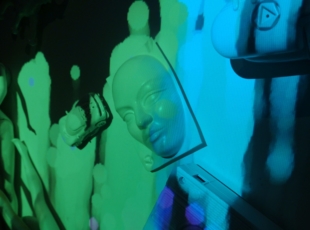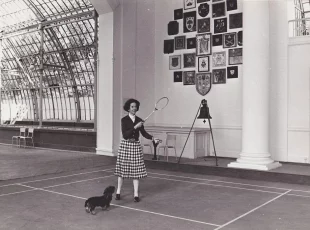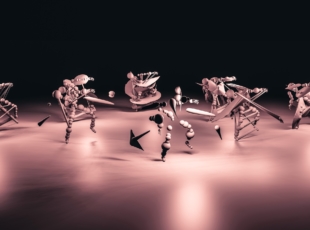From workshop to industrial wasteland, urban spaces by and for creative spirits
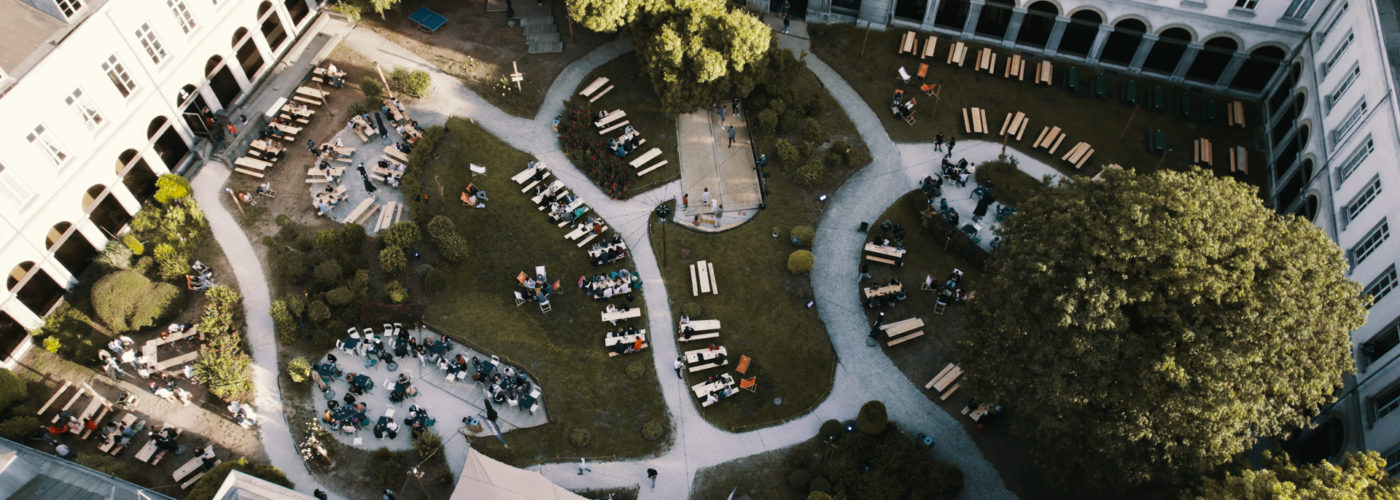
Article author :
Apart from the much-vaunted creative hubs where they do not always feel welcome, caught between financial obstacles and a lack of representativeness, creatives are at times unsure of where they should set up shop to develop their commercial activity or their art. Yet temporary occupancies and other collective initiatives are adding to a fabric of spaces conducive to creativity.
In our recent June case file, the kingkong editorial team addressed the major issues surrounding creative hubs, these sites half-way between a cultural space and a business incubator. A close look at the timeline reveals that entrepreneurship in the cultural and creative industries (CCI) emerged in the 2010s. It is the cultural counterpart of the start-up movement. The Belgian public authorities began to invest more in CCI around 2014. Thanks to structural support provided by the European Regional Development Fund (ERDF), hubs began popping up all over Belgium. The country is following a European trend which is gaining increasing traction in the cultural entrepreneurship sector.
In parallel with that, there is much talk about the theory of the ‘creative city,’ particularly in works such as The Creative City: A Toolkit for Urban Innovators, written by Charles Landry and first published in 2000. The British consultant, a specialist in urban creativity and innovation, explores the issues and challenges faced by cities in a context of globalisation. Advocating the use of art, culture and creativity as a means of ensuring the long-term economic sustainability of their metropolises, governments have swiftly adopted the creative city theory as a template to be implemented. But its detractors have instead perceived it, not altogether wrongly, as a pure urban utopia. Indeed, the creative city has also spawned the emergence of standardised urban cultural neighbourhoods. Today, the Global Cultural Districts Network acts as an umbrella organisation for some sixty neighbourhoods of this type the world over.
Urban concentrations of creative energies
As Basile Michel, a lecturer in geography at the CY Cergy Paris Université, explains in an analysis for The Conversation media platform, the creative city theory promised a significant economic upswing for ailing cities. ‘This revitalisation of areas in crisis sparked the interest of public authorities, which since then have looked to label with an official seal of approval cultural and creative districts which had emerged spontaneously, and even to manufacture them entirely by artificially concentrating cultural facilities, business premises and places of entertainment, as was the case with the West Kowloon Cultural District in Hong Kong.’»
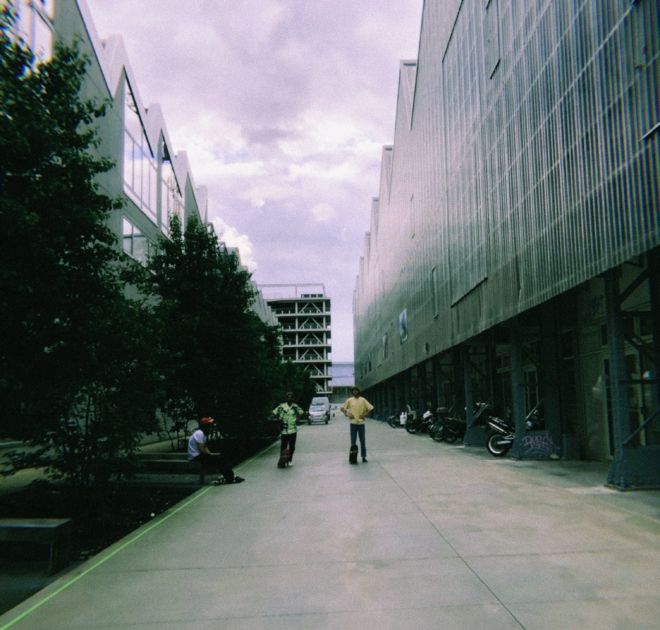
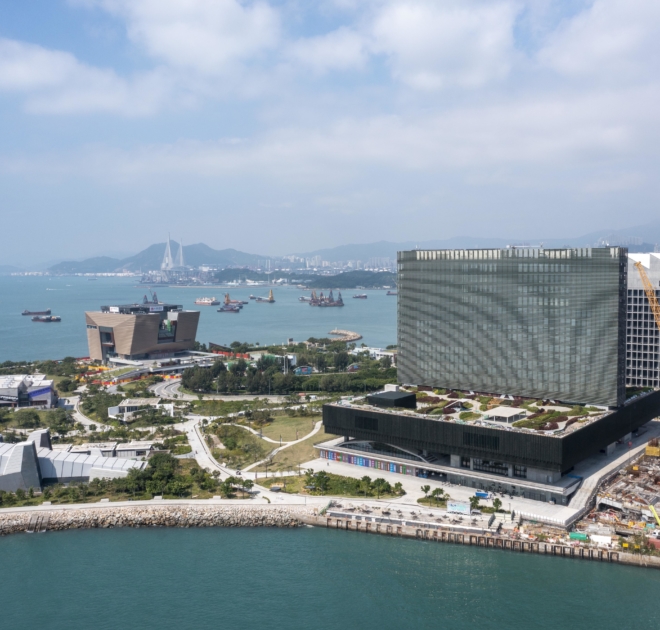

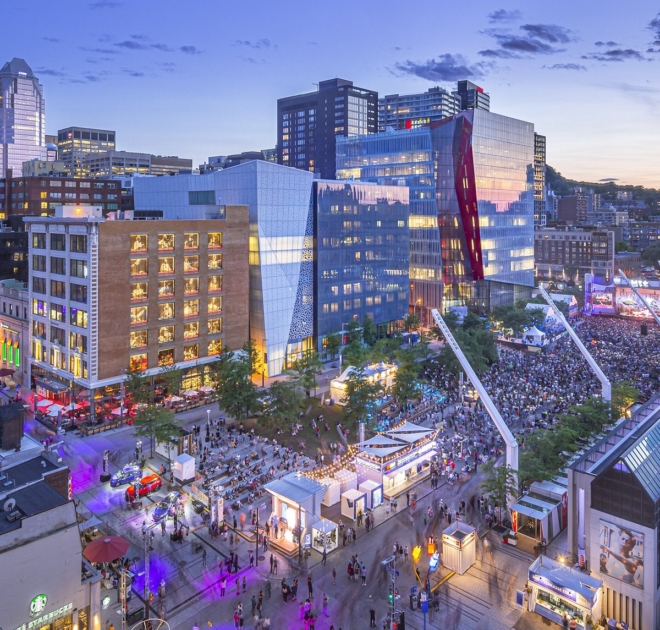

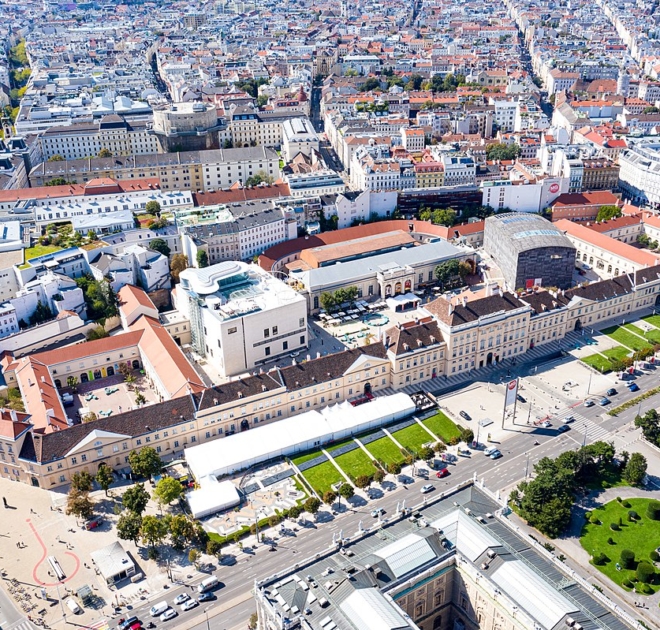
The Events Quarter in Montreal, the Museums Quarter in Vienna or the Creation Quarter in Nantes; these districts dedicated to art and culture bring in large crowds, but they are also often used for marketing purposes to restore the attractiveness of these large cities to tourists, with the aim of extending their appeal far and wide. But does the pre-planning of culture and creativity as part and parcel of urban development schemes actually work? You are doubtless wondering where we are going with this long introduction to the subject, aren’t you? What we wanted to address by introducing you to these in-depth (or tedious, it depends) urban theories, is that the implementing of these large cultural districts and the business rationale behind creative hubs can at times prove counter-productive to artistic creation itself. For example, when the Creation Quarter in Nantes was established, it was met with rejection by several artists and key actors on the local culture scene, who developed their own project in the Olivettes district, on the opposite bank of the Loire river flowing through the French city.
Is an artist a project owner? Not necessarily.
Vincent Lepage, Director of the Economic Policy Directorate at the Public Service of Wallonia
In artistic and cultural circles, rather attached to the freedom of their creative fields, a certain defiance as regards political institutions prevails amongst a section of those active within them. Consequently, certain creative spirits (an expression we will favour wherever possible, because not everybody calls themselves an artist) do not feel involved, and may even feel excluded by these premises ostensibly dedicated to them. For those in the most precarious financial circumstances, the increase in rent imposed by the property market and gentrification quite simply make it impossible to move into the artist workshops available for rent in these creative districts. ‘Shortly after the emergence of the first Walloon hubs, criticisms were levelled against the support policy for CCI in the Walloon Region,’ recalls Vincent Lepage, Director of the Economic Policy Directorate at the Public Service of Wallonia (PSW). ‘From the get-go, these policies have focused on the economic development of the zones in which these hubs are established, and haven’t always included artistic endeavours in their aims. The question which needs to be asked in this case is, “is an artist a project owner?” Not necessarily. But creative hubs do have goals other than business ones, and can develop other synergies, such as setting about building bridges with non-profit associations and other local creative third-places.’
When a creative wishes to develop a project, the hub can thus be the site of economic roll-out, and the third place, the space of artistic experimentation. A type of co-operation which has already been implemented at CLICK, the Mons creative hub very rooted in its local creative ecosystem, but also in Namur. The TRAKK regularly works with the Wallonia capital city’s Comptoir des Ressources Créatives (CRC), established within the non-profit association, Hang’ART, in the Saint-Servais district. Like the creative hubs, a number of CRCs have been set up throughout the Walloon territory. These spaces are intended for everyone, with no restrictive conditions as regards status, sphere of activity or experience. The goal? To offer exceptional support for every stage of a creative or artistic journey, from workshops to storage spaces, from recording studios to help with distribution. With a common philosophy: ‘Artists share similar needs and problems,’ a CRC spokesperson explains. ‘When you pool human energies, we are there to provide support with the difficulties faced along creative and artistic professional pathways. And these sites, where interaction takes place and resources are available, are not restricted merely to the opportunity to occupy the premises at affordable prices. Exchanges of services, tools, skills and know-how boost a spirit of collaboration that is invaluable to each person within the community.’
Leaving aside any clear distinction between creative hubs and co-working spaces on the one hand, and alternative sites on the other, we quickly realised that artists’ requirements in terms of work areas have nonetheless sparked the emergence of alternative spaces. Occasionally formed on the initiative of one or several creative spirits, occasionally more collectively. So, before heading off to discuss the subject with several of the actors operating on these sites, we thought that bringing them together on an (admittedly non-exhaustive) interactive map might help some creative souls searching for a place to try things out, express themselves or branch out.
Working and creating as if at home
Just a very short walk from Brussels-Midi train station is a space which seems to operate outside the codes of the capital’s trendy co-working areas. ‘Louise Steyaert, the site’s founder, is an independent graphic designer and has always found it difficult to work on her own,’ explains Daphné Pirot, the manager of the Palazzo Creative Workspace. ‘She was looking for a co-working space, but she couldn’t see herself in the majority of spaces offered in Brussels. It was too bland, too ‘corporate,’ and she didn’t connect with the people who frequented these places. From there emerged the ambition to create her own space, like a second large house.’
Occupying a former garage that has been turned into an atelier in Saint-Gilles, Palazzo extends to 500m2 of workspaces dedicated to artists and creatives of every genre. A hybrid of co-working unit and artist’s studio which offers flexible memberships by the day, but also spaces for creation, as well as being an events venue to promote culture and art. Palazzo currently numbers a close-knit community of 50 members: painters, photographers, architects, writers, illustrators, jewellers, musicians, film directors, graphic designers, ceramists, web designers, etc. ‘Each person works on their individual projects, but the space encourages interactions, even collaborations,’ continues Daphné. ‘And even though we are geared towards artistic professions, we won’t turn down an entrepreneur who manages an environmental consultancy firm.’ And, as we are in Brussels, a not-insignificant detail should be emphasised: being recognised as an accredited co-working space, Palazzo workers can apply for the co-working premium funded by the Brussels Region. An allowance which can be as much as 450 Euros, this is also a welcome helping hand for projects driven by creative enterprises.
That feeling of being at home is also what Dounia and Ilias, siblings and co-tenants, were looking for. He is an actor, a graduate of the Liège Conservatory, and a stage manager to pay the bills. She is a full-time researcher in anthropology at the Université Libre de Bruxelles. Together, they have just opened the Salon, a space aiming to provide young artists with visibility. ‘The initial idea was to repurpose a place we knew well but which was no longer in use. This building has been made available by the Forest municipality for over 20 years, when our mother founded her non-profit association there. But with her association’s activities petering out, she began to rent the space to the Théâtre de Poche and to yoga teachers. Since the repeated lockdowns, these spaces have been occupied for just an hour a week, on average. So they weren’t being used for much at all.’
With both of them heavily involved in artistic circles, Dounia and Ilias regularly spend time with large numbers of artists desperately looking for a place where they can experiment. ‘As an artist, either you come up with a plan to squat somewhere officially, by continuing to use the workshops of the art school you have just left, for example, or you have the means to pay for a workshop in a shared space, which is not the case for the majority of artists.’
Painters, theatre, music, tattooing, drag artists. We really want to sweep away the financial impediments in order to encourage all young artists to get started.
Dounia and Ilias, the Salon’s founders
The opportunity was too good to miss. On 1 July, after several months of brainstorming and hard work, the Salon opened its doors at 148 Rue du croissant, in Forest. The opening night set the tone. Prior to and in the aftermath of the event, the two Brussels residents received dozens of requests from artists looking for a place they could occupy. As well as promoting the visibility of the artists of tomorrow, Dounia and Ilias’ ambition is also to provide access to their space completely free of charge, no matter the discipline. ‘Painting, theatre, music, tattooing, drag artists. We really want to sweep away the financial impediments in order to encourage all young artists to get started. To bring the project alive, we intend to organise exhibitions and events which will showcase the Salon’s art scene. You don’t need to have a fully-developed project to join us. We might host a scriptwriter who wants to trial a small part of a theatre play, because they have just graduated but don’t know how, or where to get started. The only thing that sets boundaries as regards choosing which art projects will be welcomed at the Salon is a charter of values which the artists will have to embrace. We don’t want to lose our way and become just another in a long line of ‘trendy’ co-working spaces. We want to keep an eye on the representativeness of the artists and art forms we host, because we feel that art is still too white, hetero, cisgender (people whose lived gender identity matches the one they were assigned at birth) and classist.’
On a larger scale, temporary occupancies are widespread in cities. Ranging from an industrial wasteland to former barracks fallen into disuse, these locations are often waiting for the significant renovation work required to turn them into grouped accommodation units or communal services. The municipal authorities occasionally decide to make these sites available for the overseeing of projects geared strongly to social, cultural or artistic purposes. As the manager of pali pali, an accelerator of cultural, social and solidarity projects in Brussels, Edouard Meier has a peripheral view of these sites, dotted around the capital. You yourself may have already strolled across the flagstones of Usquare.brussels (previously named See U) or around the garden of the Grand Hospice. ‘We manage several temporary occupation projects in the social and solidarity economy sector, and we also provide support for entrepreneurial projects embedded in the CCI, both for public bodies and private initiatives,’ explains Edouard Meier. ‘The value of an actor such as pali pali is having a greater capacity for action, a communication network and individual project development for greater impact. But that also allows us to more precisely meet the needs of the people wishing to move into these premises to work on their cultural or art project.’ Need somewhere to shoot a music video? Edouard would most likely steer you towards a space within l’Imprimerie, the most recent of the ‘third spaces’ entrusted to pali pali. A screen-printing workshop needs organising? You’d be better off at Usquare.
It’s not a project which would have caught the eye of an entrepreneurial support programme, but it’s so worthwhile and clever.
Edouard Meier, Director of Pali Pali
Unlike a creative hub, the economic aspect of the creative projects accommodated within a temporary occupancy setting is less critical. ‘That remains a dual metric: artistic creation and economic creation,’ continues Edouard Meier. ‘But the advantage for the artists is the scope to go with the flow. They may wish to just move in over the mid-term, or for a short period, to test things out. Sometimes, they see the whole thing end in an epic fail.’ By providing a space for more marginal creative minds, whose projects would at times be considered flimsy, on paper at least, and whose approach may be too niche to be developed within a hub, a more diverse group of actors can evolve. At the Grand Hospice, for example, we came across the theatre company Les Voyageurs sans Bagage, which revisits the major classics of French literature. Recently, through a process of rewriting, it has transformed d’Artagnan into a woman and turned the literary work into a popular comedy. ‘It’s not a project which would have caught the eye of an entrepreneurial support programme, but it’s so worthwhile and clever,’ insists the pali pali director.
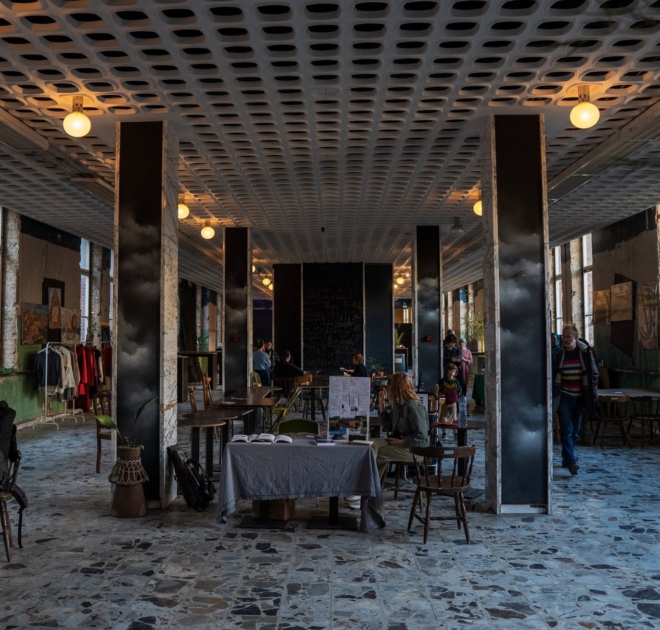
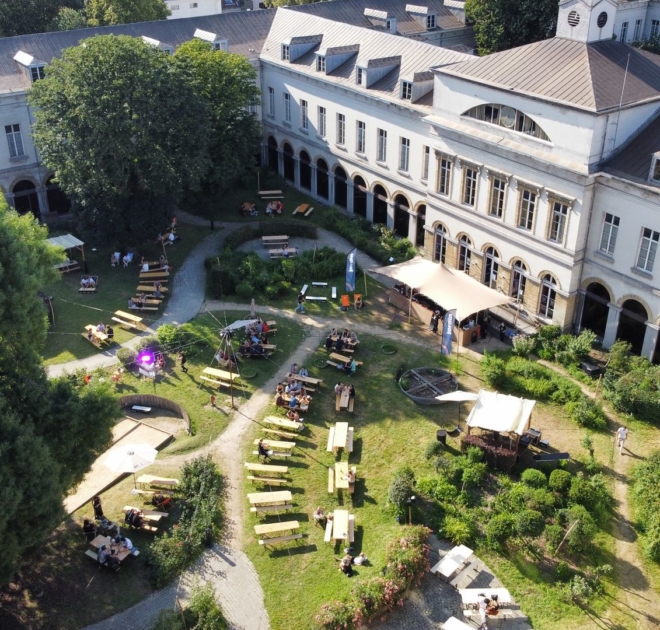
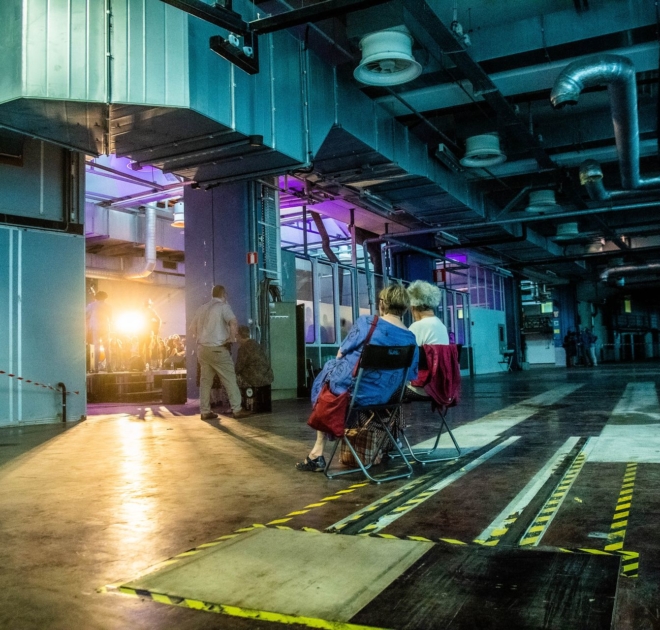

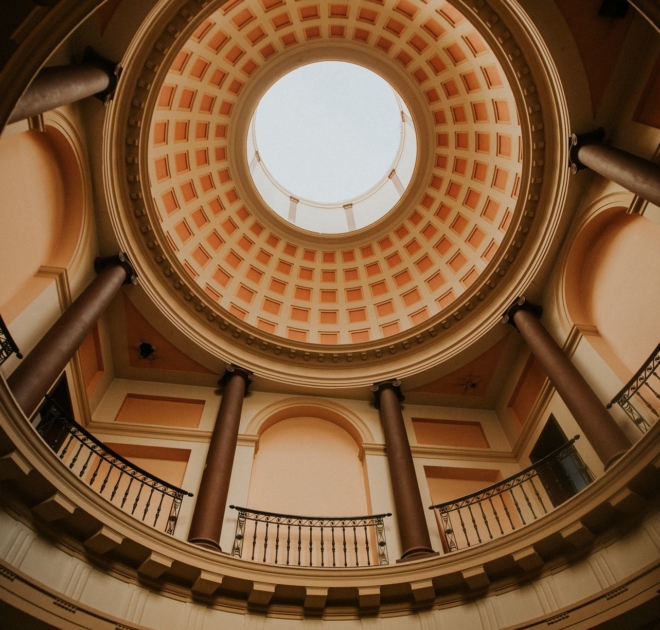
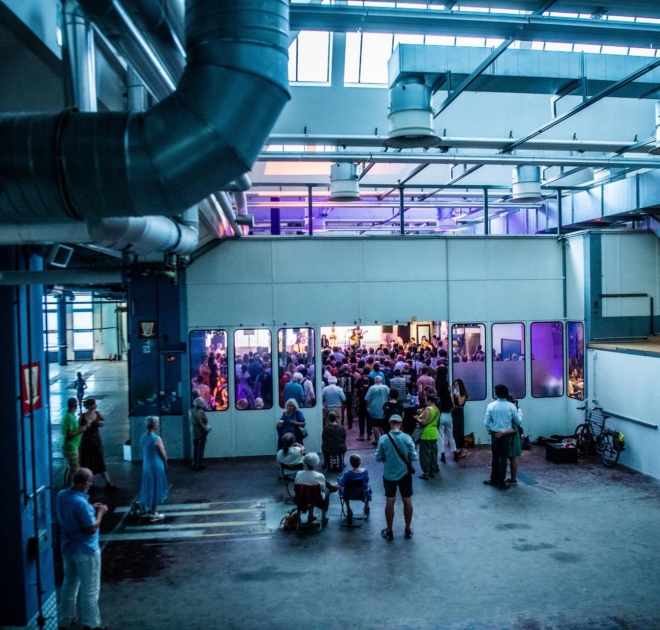
Furthermore, the cost of accessing a temporary occupancy space is generally a little lower. On average, to move into premises at pali pali, you should reckon on 65 euros per m2 per year. Spaces which meet the crying need for work areas at affordable prices, as well as the need for a community. ‘The creative industries operate in organised gangs,’ explains Edouard Meier. ‘At each of the sites we manage, we could point you to around twenty collaborative projects which have emerged from discussion and the pooling of ideas.’
Dematerialised spaces
To build themselves a community, artists also occasionally prefer to meet up and talk things over for a few hours. That has been made clear by one last initiative which caught our attention whilst writing up this case file. ‘Previously, I rented a space in a workshop in Molenbeek,’ recalls Jesse, an illustrator and co-founder of the Artist coworking Brussels collective. ‘It wasn’t very expensive, but as an illustrator who was just starting out and had only recently arrived in Belgium, it was still difficult to make ends meet. And I wasn’t prepared to get into debt to enjoy the use of a space.’ Together with another illustrator friend, Jesse realised that a great many creatives want to work with others. ‘To help each other, but also simply to meet other people, because our professions are at times very solitary,’ laments Jesse. ‘From an admin perspective alone, the various levels of experience in the art domain are very useful to everybody.’
The reasons which lead creatives to collective processes are varied: the need to send boring emails, to contact customers, for someone to cast a critical eye over a work or illustrations, to achieve more by motivating each other, etc. In a setting which the founders see as multidisciplinary and inclusive (once again, a values charter backs this up), the collective’s sessions take place once a week in a café. ‘The artists can work together with an internet connection for several hours, whilst spending money in the café, of course. At the beginning, there were only four or five of us. But after we had been going only three months, our sessions were sometimes attended by up to 20 people. What’s more, we have now found a café which supports us, and where the manager is delighted to help out a community of artists.’
Graphic designers, translators, creatives of every genre, even journalists (we took part in order to sample the atmosphere), several of them have become regulars and join Jesse each week, others turn up as the mood takes them. But, given the appeal, other collectives have rapidly been created, in Liège, in Luxembourg. ‘Even in Osaka,’ exclaims Jesse. ‘An artist from Japan is returning home for a while and wants to kick-start the concept over there. From city to city, you get the sense that the art bubble is a small world, and once you have entered it, you just know absolutely everyone.’ So, artists and creatives, having seen how inspiration is often found in unforeseen places, finding somewhere you feel able to give it free rein bodes well for an exciting creative future. Clearly, there is no shortage of options.
A story, projects or an idea to share?
Suggest your content on kingkong.

